Cannabis breeding and cultivation is an art that can only be perfected by knowing the ins and outs of the cannabis plant. If you’re interested in getting started with growing or creating a new cannabis strain, continue reading for more information.
Cannabis plant anatomy
You’ll need to know the specific parts of the male and female plants if you’re interested in breeding cannabis.
Seeds
Female marijuana plants produce seeds and grow fifty/fifty female or male plants. Seeds need to go through germination, sprout, and form the taproot to anchor the marijuana plant and provide stability.
Cotyledon
The cotyledon leaves are the first leaves to grow after germination. They usually grow in pairs and signify a healthy and strong female or male plant.
Roots
The roots of the female and male cannabis plants grow downward from the main stem into the soil. It’s often called a taproot. It is the lifeline of your female and male plants and will provide essential nutrients, water, and oxygen.
Branches and Stem
The branches of female and male plants grow directly out of the central stalk. They are in place to protect and support the pre-flowers, buds, and fan leaves.
The main stem or stalk is the support system of the plant and grows upward from the roots. You’ll also find the pollen sacs in male cannabis plants along the stem.
Node
The marijuana plant’s node is a little “joint” where branches grow from the main stem or another branch. Some nodes contain buds, and some do not. They play an essential role while sexing cannabis but do not significantly influence potency.
Fan and sugar leaves
These leaves are large and capture light for photosynthesis. They are the iconic marijuana leaf, though they are usually discarded once trimmed because they do not produce resin.
Sugar leaves are smaller than fan leaves and produce quite a bit of resin. These leaves are where the buds are formed and can be saved after trimming for pre-rolls, extracts, or concentrates.
Flowers
There are no male flowers; only female plants produce buds. They are small and teardrop-shaped, with pistils attached to bracts. You’ll notice shimmering trichomes, and the more, the better. The flowers that contain CBD, THC cannabinoids, and terpenes are typically dried and then ground to smoke.
Cola
Cola is a cluster of flowers that form in a bunch. There will be small colas on lower branches and one large cola (apical bud) that grows at the plant’s top and the main stalk’s end. Cola is also known as the “bud site” after the flowering stage.
Bract and Calyx
All of the female reproductive parts are together within the bract. They are tear-shaped leaves covered in resin glands that produce the highest amount of cannabinoids like CBD or THC. While you can’t see the calyx, it’s a see-through layer inside the bract over the ovule.
Stigma and pistil
In a nutshell, the pistil is the plant’s reproductive system. It contains thick strands (stigma) which look like hairs. The job of the stigma is to collect pollen, which is why they start out white and eventually turn yellow. While these reproductive parts are vital to plant growth, they do not affect potency or taste.
Trichomes
The trichomes are the tiny, sugary crystals covering and protecting the buds. They come from the glands of leaves, stems, and the calyx on male or female marijuana plants. The more trichomes, the more potent your plant will be.
Male plants vs. Female plants
Female cannabis plants take longer to show signs of their gender, but you can recognize them by the white hairs that appear during the flowering light cycle. A single male plant will grow pollen sacs that appear close to the main stem near the bud sites on the female plant, one to two weeks after the flowering cycle. The pollen sacks will often burst, and you will see them release pollen that’s yellow on the leaves below the bursting.
The plant’s gender is critical when determining seed production. Unless a male plant turns out to be a hermaphrodite, it will not produce male cannabis seeds. The job of a male is to pollinate with pollen sacs; the position of a female is to create pre-flowers and buds. Marijuana is similar to many other plants in those ways.
Like humans, cannabis plants are dioecious, typically having male or female reproductive organs. However, the rare plant will have traits from both genders. Depending on the grower’s goal, it’s essential to know which one you’re working with before moving forward.
Growing healthy male and female plants together will result in cross-pollination and thus the production of more seeds for future weed crops. But, if you’re goal is to produce large buds rich with cannabinoids, you’ll want to separate the plants. Removing male cannabis plants will cut out fertilization of the mother plants, resulting in dense, seedless buds, or sensimilla, that have a higher content of cannabinoids, such as THC or CBD. The potent, resinous buds in dispensaries are sure to be from a female plant as there are no real male flowers.
Male plants are vital to most growers and farmers during cannabis cultivation since they provide pollination, thus fertilizing the female plants. They can also pass down specific genes to combat poor genetics in some plants, such as mold resistance, and are vital for producing new strains of healthy plants.
Can a weed plant be both male and female?
In rare plant breeding cases, you may end up with hermaphrodite plants that can identify male or female. These marijuana plants are equipped with both male and female traits. Regarding the cannabis plant, being labeled a hermaphrodite means it has developed male and female flowers.
Feminized seeds vs. Regular cannabis seeds
Regular seeds are completely organic and pure. Male and female seeds will produce the typical 50/50 male cannabis plant or female marijuana plant. Feminized seeds are extracted from a treated cannabis plant and will only result in the female plant, female pre-flowers, seed production, and never male flowers.
How long does it take to breed cannabis seeds?
After a cannabis seed is fertilized, it will typically be ripe from seed form within two to six weeks, depending on the strain and vegetative environment.
What is selective breeding?
Selective breeding is the process of selecting a male parent and a female parent strain with particular characteristics to breed together and produce offspring with desired traits. Humans have been selectively breeding cannabis plants to strengthen their genetic line for centuries.
What is a strain?
Cannabis strains are considered to be a pure or hybrid genetic variation of the plant Genus Cannabis. There are three species: Cannabis Sativa, Cannabis Indica, Cannabis Ruderalis. Ruderalis is not as popularly known; however, it is a derivative of cannabis with the lowest THC levels. Although they are popular among the cannabis community, hybrids are not considered a species as they are made of Sativa and Indica, with typically one or the other dominating the gene pool.
Landrace Strains
The word landrace originates from the Danish language and simply means “origin.” Landrace strains are the oldest known strains in the cannabis world. They traveled from the Himalayan mountains all over the world and have become the parent strains to many well-known hybrids we use today. The majority of today’s best cannabis strains are hybrid, meaning they were selectively produced for desirable genetic qualities such as terpene production, cannabinoid preferences, and THC potency.
Ruderalis Development
Hemp and Ruderalis are legal in the US, thanks to the Farm Bill of 2018. They are very low in THC, causing little to no psychoactive effects. Ruderalis is from Russia, is an auto-flowering plant, and has short, thin stems with large leaves. Hemp is more similar in looks to Indica and Sativa, but it doesn’t produce much THC. Hemp is used in the textile industry and for its production of alternative cannabinoids, such as CBD and CBG.
What traits to breed for
For marketing and medical marijuana purposes, cannabis breeders will develop different varieties to highlight specific desirable traits, such as:
- Color
- Density
- Flavor profile
- Aroma
- Medicinal benefits
- Psychoactive effects
- Cannabinoid percentages
- THC vs. CBD
Can cannabis be inbred?
Yes. In the world of cannabis cultivation, inbreeding is crossing a family or variety of plants with another to maintain specific bud traits. Cross-breeding results in inbred weed plants with no outside genetic material other than their parent plants.
Backcrossing
Backcrossing is a type of cannabis breeding that allows a targeted trait to pass between certain plants to their offspring. This breeding program is different from standard breeding methods because backcrossing only involves one parent plant at a time.
Selfing and Clones
Humans can produce feminized cannabis seeds with a single female marijuana clone. These seeds carry the exact same genetic makeup as the mother. To accomplish this, the cultivator must first reverse the sex of the female to induce self-pollination of the same strain. This process, called selfing, is commonly applied to clone-only strains to convert to feminized seed form.
Cannabis grower tips
- Keep your growing low-key. The fewer people that know, the more discreet your operation can remain.
- Avoid over and under-watering. Manage water quality and pH.
- Choose high-quality fertilizer and avoid giving too many nutrients.
- Follow the plant’s growth cycle. Every detail matters during growth.
- Choose the suitable soil for cannabis growth.
- Pick top-quality seeds and a strain you’ll love.
- A poor climate without proper ventilation, lighting, and airflow will result in an unhealthy plant.
- Maintain an excellent infrastructure for growing cannabis.
- Don’t harvest too soon. Wait until the buds are fully formed, and flowering is complete.
- Store your weed in an air-tight container for best results.
How Does Cannabis Breeding Impact the Quality of Cannabis Seeds?
Cannabis breeding plays a crucial role in enhancing the importance of healthy cannabis seed. By carefully selecting parent plants with desired traits, breeders can produce high-quality seeds. Proper breeding methods lead to improved genetics, resistance to diseases, and better overall plant health, resulting in superior cannabis seeds.
Top Cannabis strains bred in the U.S.
- OG Kush
- Grandaddy Purp
- Blue Dream
- White Widow
- Skunk No. 1
Keep In Mind
Years of cannabis cultivation within a widely illegal market means that a vast majority of what is known about cannabis breeding comes from those who have dedicated their careers to becoming underground master growers. As a result, we are starting to understand breeding techniques for creating your own strain and cannabis genetics in general. With statewide legalization spreading quickly, the science is getting better, and we’re sure to see some of the world’s most potent and iconic strains ever.

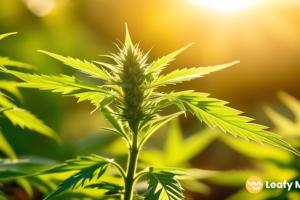
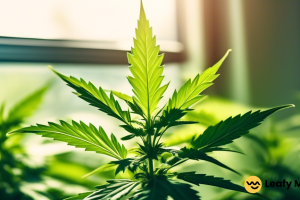





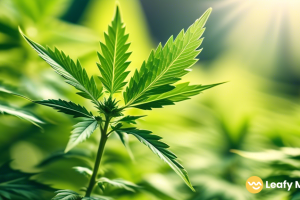
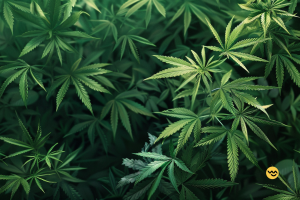
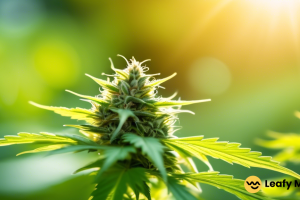
Leave a Reply